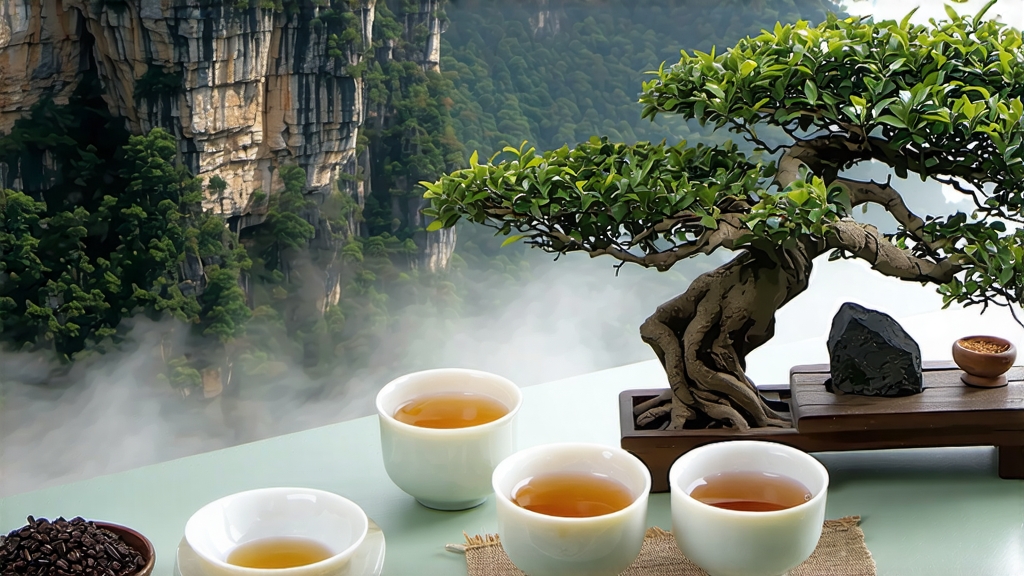
If green tea is the fresh face of spring and pu-erh the wise elder of the tea world, then Wuyi Shui Xian occupies the dramatic middle ground: poised, complex, and quietly powerful. Among the five major oolong families of China—Min Bei, Min Nan, Guangdong, Taiwan, and the emerging high-mountain styles—Shui Xian is the flagship cultivar of northern Fujian’s Wuyi Mountains, a UNESCO dual heritage site where vertical cliffs press against the Nine-Bend River and morning mist acts as a natural shade-cloth for centuries-old tea gardens. International drinkers often meet this tea under the generic label “Da Hong Pao,” yet Shui Xian is genetically distinct, historically older, and, in the eyes of many local artisans, the truest interpreter of what the Chinese call “rock-essence” or yanyun—that elusive stony sweetness that lingers on the sides of the tongue like the echo of a temple bell.
History: From Monastic Legend to Republican Commerce
The first written record of Shui Xian appears in the late-Song “Cha Lu” (Tea Record) of 1107, but oral lore pushes the story back to the Southern Tang (937–975 CE). A wandering monk, so the tale goes, found an unusually tall tea tree growing beside a spring whose surface reflected the image of blooming narcissus flowers—shui xian in Chinese. He took cuttings back to the Hui Yuan monastery, where the plant’s tall, broad leaves and orchid-like aroma earned it the name “Narcissus.” By the Ming dynasty, monks were trading roasted cakes of the tea to scholars traveling the imperial examination circuit; by the early Qing, the Kangxi Emperor’s southern tour reportedly accepted pressed bricks of Shui Xian as tribute, giving the tea court-level cachet. The real commercial boom arrived in the 1910s–30s, when Amoy (Xiamen) tea merchants charcoal-roasted Shui Xian to a deep chocolate hue, packed it into lead-lined tins, and shipped it through Hong Kong to Southeast Asia and London, where it was marketed as “Bohea Narcissus” and blended into English breakfast bases for its malt-cocoa depth.
Cultivar & Terroir: The Tall Tree That Loves Rocks
Botanically, Shui Xian is a medium-leaf, semi-arborial cultivar (Camellia sinensis var. sinensis cv. Shui Xian) that can reach four meters if left unpruned. Its leaves are 1.5–2 times larger than those of Rou Gui or Tie Luo Han, giving the finished tea a broader surface area for the repeated charcoal bakings that define Wuyi style. The Wuyi micro-climate is the other protagonist: weathered tuff and granite cliffs release mineral-rich runoff; day-night temperature swings of 10–15 °C slow the accumulation of catechins while boosting aromatic amino acids; and the constant river mist refracts sunlight into a soft, diffused glow that thickens the leaf cuticle. Together these factors create the “rock bone” structure—an almost saline minerality that underpins the cultivar’s natural orchid fragrance.
Garden Grades: Zhengyan, Banyan, Zhou Cha
Locals divide producing gardens into three concentric quality zones. Zhengyan (core cliff) gardens sit inside the 60 km² scenic reserve at elevations between 200–600 m; here the soil is so stony that farmers must dig holes with pickaxes, and the same plot may yield only 3–5 kg of finished tea each spring. Banyan (semi-cliff) fields lie just outside the park gate, where red sandstone begins to mix with loam; leaf character is still mineral but less persistent. Beyond the river bend, Zhou Cha (river-flat) terraces on alluvial soil give higher yields, softer body, and a fruit-forward cup that fades quickly after the third infusion. Top-grade Zhengyan Shui Xian can retail for over US $1,000 per 500 g, yet many locals insist the sweet spot for daily drinking is high-elevation Banyan: complex enough to satisfy, affordable enough to brew without anxiety.
Craft: The Eight-Step Dance of Fire and Time
- Picking: Only the middle-sized “zhong kai mian” (three-leaf and a bud)